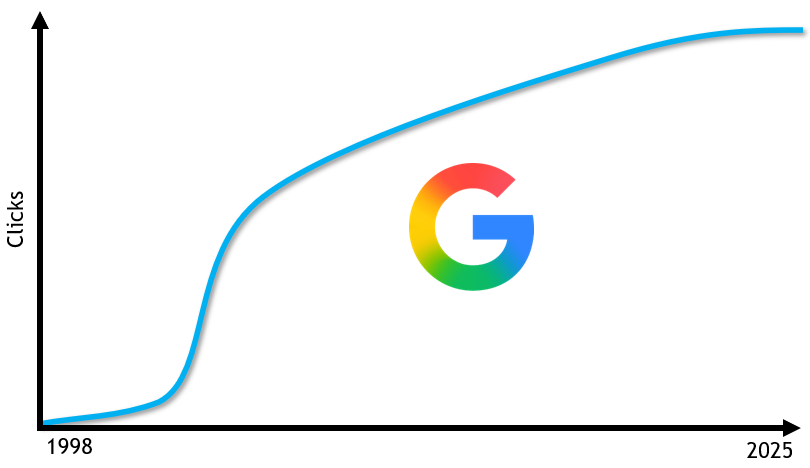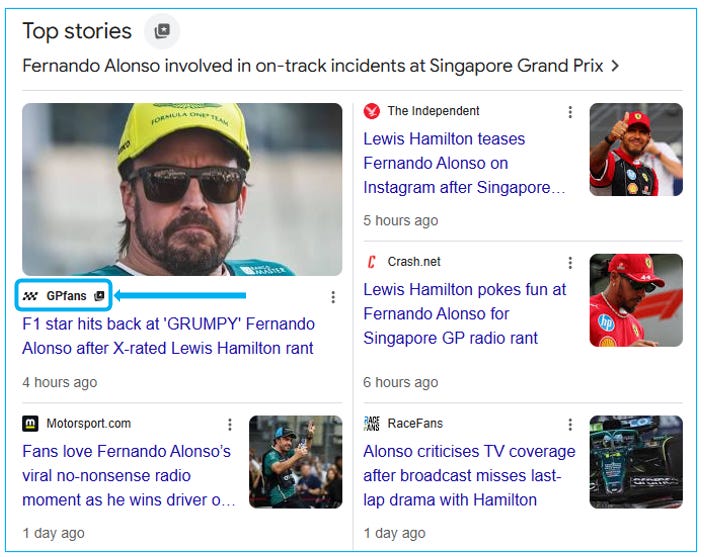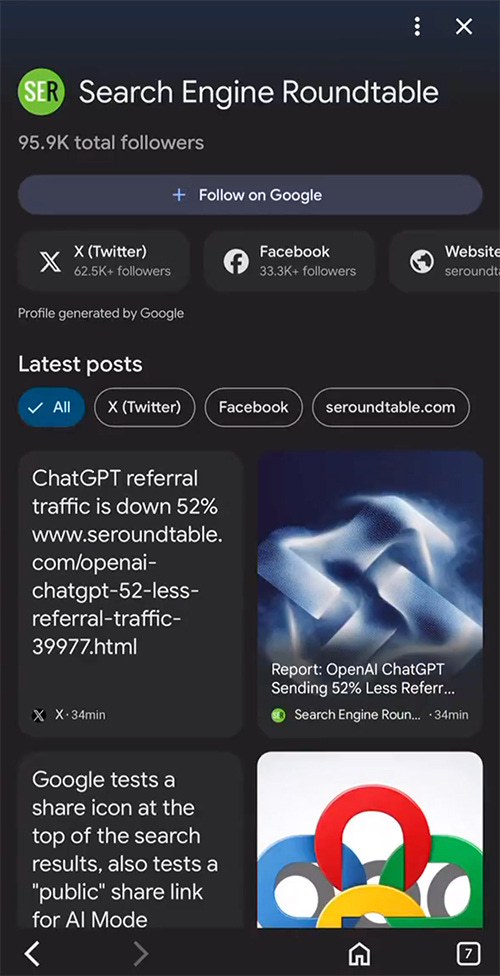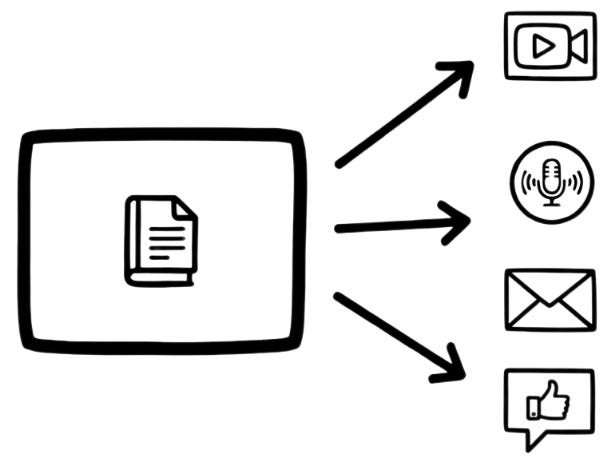AI Survival Strategies for Publishers
AI is seen as an existential threat to publishers. There are strategies that allow for news to survive and even thrive in the AI-first world. But these may involve some tough challenges.
The rise of AI technologies has brought a level of panic to the publishing industry not seen since the birth of the world wide web. We all know AI is changing how people engage with websites, but we’re not sure yet what these changes will lead to.
The fact that AI is just past its peak in the hype cycle isn’t helping us form any clarity. The bubble is about to burst, but things will not go back to ‘normal’ - whatever that normal may have been pre-AI.
There will be a new post-bubble status quo that will eventually materialise. I strongly believe publishing as a whole will end up in a healthier state, but also that some individual publishers will suffer - and may even cease to exist.
In this newsletter I’ll outline what I believe are several key survival strategies that online publishers can adopt to help them weather the storm and emerge stronger and more resilient.
1. Search Lives On
Despite the bleatings of a number of misguided LinkedIn influencers who I mercifully shall not name, there is no evidence that search as a channel is dying. Google is still by far the largest driver of traffic to websites, and news is no exception.
What we do need to realise is that ‘Peak Search’ has already happened, and the total number of clicks that Google sends to the web will not substantially grow.
Publishers that are what I call ‘SEO mature’, with strong SEO and audience growth tactics in place for many years, will not be able to grow their readership through search alone. For these publishers search traffic is - at best - levelling off.
That doesn’t mean search cannot be a growth channel. Many publishers are nowhere near ‘SEO mature’ and have plenty of scope for growth in search clicks. In fact, I daresay most of the publishers I work with have not yet maximised their search potential, and can achieve strong gains from improved editorial and technical SEO.
But search as a whole is now a flat channel. We cannot expect to see the same consistent increase in search clicks that have been foundational to many publishers’ growth strategies for the last two decades.
Search is now a zero-sum game. When you get a click, a competitor isn’t. The pie has ceased to grow, which means we have to fight harder for our slice. Good SEO is even more crucial. You cannot rely on Google’s own growth to get your share, you need to wrestle it out of the hands of your competitors.
AI is an Accelerant
While publishers are rightfully skeptical of Google’s claims about the impact of AI on traffic, the flattening of the search traffic curve began long before AI appeared on the scene.
There have been many warning signs that the endless growth of Google clicks wasn’t endless after all. Zero-click search was a concept years before ChatGPT launched.
But most publishers failed to heed these warnings and continued to rely on Google as their primary growth channel, taking no efforts to diversify their audience strategies.
AI didn’t cause the search curve to flatten, but it did serve as a bucket of gasoline on that particular fire. AI has accelerated zero-click, and sped up the rising discomfort many publishers were already experiencing.
Featured snippets and other intrusive search elements, fragmented online user behaviour, algorithm updates, audience fatigue, bad user experiences, and many more factors formed the foundation of zero-click. AI merely hastened the trend by offering a channel for users to engage with the web’s content without the friction imposed by visiting a website.
Maximising Search
Apparently realising its precarious position as the gateway to the web and direct responsibility for the health of the publishing ecosystem, Google is throwing us a few bones to help us build audience loyalty.
One of these is ‘Preferred sources’. This is a new feature in Top Stories on Google’s results that allows a user to set preferred news sources.
When a Top Stories box is shown on a Google search page, if the user’s preferred sources have a relevant article, Google will give that source a spot in Top Stories.
Setting a preferred source can be done by clicking the relevant icon at the top of a Top Stories box and searching for your preferred publication, or directly with a link:
https://www.google.com/preferences/source?q=yourdomain.comSo with this link you will set SEOforGoogleNews.com as a preferred source in Top Stories:
https://www.google.com/preferences/source?q=seoforgooglenews.com
You can encourage your readers to add your site as a preferred source with a call to action. Google even provides an image for this that you can add to your website:
This new feature does raise some concerns about filter bubbles and echo chambers. But that’s a station the Google train long since passed, especially with the fully personalised and filter-bubbled content feed that billions around the world engage with daily:
2. Discover is Growing
Where search is flattening, Discover is on the rise. Most publishers I work with see good numbers coming from the Discover feed. For many, Discover is growing to such an extent that it more than compensates for diminished search traffic.
Despite this, I’m not a fan of building an audience strategy around Discover. There are several reasons for this, some of which I’ve outlined in a piece on Press Gazette and others which are detailed by David Buttle (also on Press Gazette).
Summarising those objections here:
Discover strategies encourage bad habits; Clickbait, churnalism, sensationalism, and low information gain.
Discover traffic is volatile, unlikely to generate a consistent traffic profile, and highly susceptible to algorithm updates.
Discover is not a core service that Google offers, and they can kill it without any meaningful loss for them.
Reliance on Discover gives Google enormous power over publishers.
Discover lacks the regulatory scrutiny that search is subjected to.
Yet I cannot deny the reality that Discover is a huge source of traffic, and publishers need to optimise for it to some degree.
In addition to the known Discover optimisation strategies which I will cover in an upcoming newsletter, Google has also given us a new feature:
Follow Publishers in Discover
Similar to setting preferred sources in Top Stories, the new Follow feature in Discover allows publishers to encourage audience loyalty. With the follow feature, a user will see more content from followed publishers in their Discover feed.
A user can click on a publisher name in their Discover feed and end up on that publisher’s dedicated Discover page. Tapping the ‘Follow on Google’ button there will add the publisher to the user’s followed list, and ensure more articles from that publisher will be shown in the user’s Discover feed.
The follow feature is not yet rolled out globally. As I’m on an iPhone and in the UK, I haven’t yet been able to see it for myself. So here is a screenshot from the Discover page for Barry Schwartz’s Search Engine Roundtable:
I’ll be dedicating an upcoming newsletter to Discover optimisation strategies, and include what I’ll learn about the Follow feature there.
In the same announcement where this Follow feature was introduced, Google also said that Discover will start showing more social media content like YouTube videos, Instagram posts, and even X posts.
This brings me to the third strategy for publishers to embrace:
3. Multimedia Content
Online news hasn’t been consumed in written form only for many years. It should come as no surprise that your audience wants to engage with your news in many different formats on different platforms.
As Discover is now integrating social posts into its feed, this presents additional opportunities for publishers to create content in various formats and publish these on popular platforms.
So you should be doing YouTube videos, especially Shorts. And Instagram posts and videos. Though I cannot recommend you stay active on X - I personally have gotten up from that table, and you should too.
Podcasts are another obvious format that enjoys great popularity. News podcasts dominate the top rankings on most podcast platforms, and news publishers are especially well-placed to carve out audiences for themselves there.
Email newsletters are enjoying a resurgence in popularity (one that I have taken advantage of myself, as you can see), though I would argue that email has never really gone out of fashion. It just lost the spotlight for a while, but always kept on delivering for those that do it right.
It’s never too late to start experimenting with multimodal content. If you have a great piece of journalism, it doesn’t take much to turn that into a podcast. That podcast should be recorded with a camera, and voila you have a YouTube video. You can then turn that video a series of YouTube shorts, which can also populate your Instagram feed, etc.
The barrier to entry is low, and you won’t need a massive audience to make your multimodal adventures pay off.
At the upcoming NESS conference, a few sessions will dig into channel diversification. I’m especially looking forward to Steve Wilson-Beales’s session on cracking the YouTube algorithm.
However, none of the above is going to save your publishing site in the long term, if you don’t do the most important thing:
4. Become Unforgettable
This has been a bit of a mantra for me for a while now. I strongly believe that if your news website is interchangeable with others in your topical area, you are going to have a Very Bad Time in the next few years.
It’s a tough reality to face for many websites, and I see the ostrich approach all too often. Many publishers are incapable of being honest with themselves and seeing the truth of their commoditisation, clinging to some vague perception of uniqueness and value add.
But the fact is that probably about half of all news websites are perfectly forgettable. They don’t have anything that makes them sufficiently distinct. These publishers don’t have loyal audiences; they have a cohort of habitual readers that can just as easily switch to a competing website.
The reason many publishers don’t understand their own place in their market is because they don’t really understand their readers.
I’m going to quote my friend and former colleague Andi Jarvis here, who runs a successful marketing strategy consultancy:
“Talk to your customers.”
Such a simple thing, yet so very rarely done. When is the last time you talked to your readers? Asked them what they liked about your website, and what they didn’t? Ask them what they wanted to see more of, and what other things you could be doing?
That’s an exercise you should regularly be engaging in. I can guarantee you, your own perception and your audience’s perception of your site will be very different indeed.
Andi has a questionnaire out at the moment that I recommend you take a few minutes to fill in, even if you currently don’t talk with your customers. And definitely check out his Strategy Sessions podcast.
When you talk to your audience and understand what they want from you, it allows you to make the right decisions for your publication’s long-term health. You'll know where your real value-add is, and whether or not that’s worth a subscription fee (and how much you can charge).
It enables you to find the most popular channels and platforms your audience uses, so you can post there too. It tells you which creators’ content they enjoy, so you can reach out to them for partnerships. (Sparktoro is a great audience research tool that can help with this.)
There will be so much you will learn from just talking to your audience that it’s hard to overstate its importance. I know ‘marketing’ is a dirty word for many publishers, but it genuinely is the critical ingredient.
Most importantly, it’ll give you the insights you need to really nail down your publication’s USP and deliver the kind of value to your visitors that transforms them from casual readers into a loyal audience.
That’s where the key to survival lies. A loyal audience immunises you from whatever the ketamine-addled Silicon Valley tech bros next dream up. It ensures your continued success, independent of platforms and algorithms.
And that’s something worth striving for.
What about AEO/GEO/LLMO?
You’ll have noticed I didn’t mention optimising for AI Search as a survival tactic. That’s because it’s not. LLMs are great at many things, but generating traffic for websites isn’t one of them.
For websites that have a transaction pipeline driven by search traffic, such as ecommerce or travel booking sites, optimising for LLMs has some added value. Visibility in LLM-generated responses can generate conversions for these sites.
However, for content delivery websites like news publishers there’s significantly less value in optimising for LLM visibility. Citations in LLM responses don’t lead to clicks in any meaningful way, so the traffic opportunity there is non-existent.
However, if you adopt the survival strategies I summarised above, ironically you’ll also do better in LLMs. As it stands, 99.9% of LLM optimisation aligns with proper SEO, and the last 0.1% falls under the remit of what we’d call ‘good marketing’, which is what becoming unforgettable is all about.
I know, those suits in board rooms want to be reassured that you got this AI Optimisation thing in hand. When you do SEO well, you will have. Don’t let AI hype get in the way of good business decisions.
Not coincidentally, several sessions at NESS 2025 will be dedicated to AI and its impact on publishers:
News and Editorial SEO Summit 2025
Less than two weeks to go, so this is your last chance to get your ticket to the fifth edition of our fully virtual online event dedicated to SEO for news publishers.
It’s another amazing lineup of twenty speakers and panellists, delivering no fewer than sixteen talks and panels across two days! If you can’t join live, a ticket gives you access to the instant replays of every session as well as video recordings made available afterwards.
When you use the code barry2025 at checkout, you get 20% off the ticket price. Grab yours while you can!
Miscellanea
Official Google Docs:
AI Mode is now available in more languages and locations around the world
How to select your preferred sources in Top Stories in Search
Catch up with the creators and publishers you care about on Discover
New guidance on JavaScript-based paywall considerations
Interesting Articles:
Generative AI and news report 2025: How people think about AI’s role in journalism and society - Reuters Institute
Americans have mixed feelings about AI summaries in search results - Pew Research
Publisher traffic sources: Google steady but social and direct referrals are down -Press Gazette
AI bots bombard publisher websites with ‘no meaningful value exchange’ - Press Gazette
ChatGPT Referral Traffic Trends: B2B Traffic Slows in August - Siege Media
Despite the hype, publishers aren’t prioritizing GEO - Digiday
The Tech Industry Has a Dirty Secret: The More People Learn About AI, the Less They Trust It - Futurism
Giving users choice with Cloudflare’s new Content Signals Policy - Cloudflare
Perplexity is using stealth, undeclared crawlers to evade website no-crawl directives - Cloudflare
ChatGPT Is Using Google Search To Answer Your Questions - Tom’s Guide
“AI is an attack from above on wages”: An interview with cognitive scientist Hagen Blix - Blood in the Machine
Latest in SEO:
Ask a News SEO with Barry Adams and John Shehata - WTF is SEO
The Future of SEO for News Publishers in 2025 - Clara Soteras
Also see Clara’s SEO Playbook for News Publishers
ChatGPT Is Not Replacing Google—It’s Expanding Search - Semrush
What Our AI Mode User Behavior Study Reveals about the Future of Search - Growth Memo
Why Informational Content Still Matters in the AI Search Era - AWR
Why Splitting SEO and GEO Functions Doesn’t Make Sense - Chris Green
A complete guide to HTTP caching - Jono Alderson
My Interviews and Appearances:
News SEO: Challenges, Revenue Models, and Unchanging Truths (Video)
Barry Adams on Google, AI, and the Future of Publisher Traffic (Podcast)
SEO Confidential: Interview with Barry Adams (Interview in Italian)
Barry Adams: How Google’s AI Mode Is Reshaping News Publishing (Podcast)
That’s it for another edition. As always, thanks for reading and subscribing, and I’ll see you at the next one.








This is a fantastic read! Thank you for shining a spotlight on what publishers must do to thrive in an AI-first world.
I’d love to add one more layer: brands need publishers more than ever right now!
Here’s why
In the rising age of AI, every brand wants to be seen, trusted, and heard. But when so much of our discovery and conversation happens through AI-driven search, chats, and content summaries, brands can’t do it alone. Working alongside a trusted publisher helps a brand tap into:
Credibility — AI systems and users alike count on publishers for verified, high-quality content. For example, a report by the Tow Center for Digital Journalism found that AI and platform players recognise their success is “tied directly to the success of a thriving journalism and digital publishing ecosystem.
Source diversification & format reach — Publishers have the infrastructure (articles, video, audio, newsletters) to help brands show up where users are rather than only where they used to be.
Strategic leverage — The Ziff Davis study shows that major AI firms rely heavily on premium publisher content to train their models. That gives publishers more strategic power, and brands partnering with them can ride that wave.
So the practical takeaway for brands:
If you’re navigating visibility, trust, and growth in the AI era, don’t just think “content + SEO” think publisher-partnership plus diversified formats.
Find a publisher who your audience already trusts, help them turn valuable stories into videos/podcasts/newsletters, and let your brand show up with them, not just alongside them.
Thanks again for the article!
https://www.cjr.org/tow_center_reports/journalism-zero-how-platforms-and-publishers-are-navigating-ai.php
https://www.engagepr.com/post/earned-media-in-the-ai-era-how-tech-brands-build-trust-visibility-and-pipeline
https://www.axios.com/2024/11/05/ai-training-data-publishers-ziff-davis
This is chock full of substantially important information.